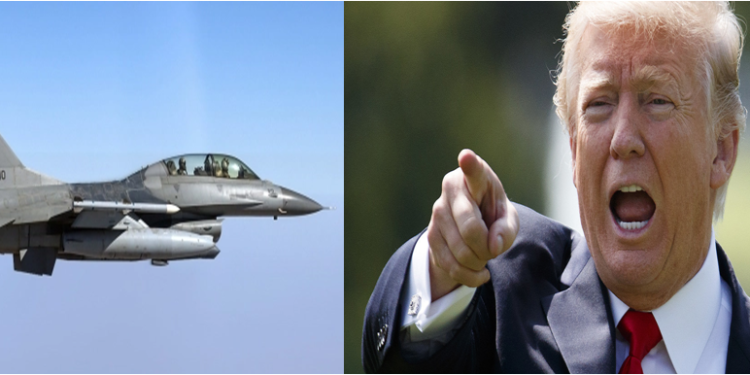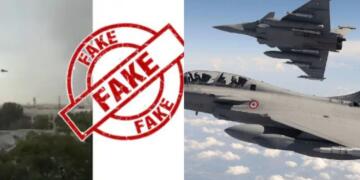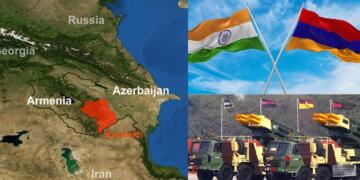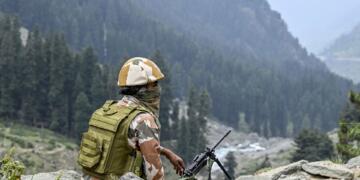In the early 1980s, the United States agreed to sell Pakistan F-16 fighter jets. This decision was taken when the United States worked closely with Pakistan to repel the Soviets from Afghanistan. The F-16 was the most important air platform in Pakistan’s air force and it was the most likely delivery vehicle of a nuclear weapon. However, when nuclear proliferation-related sanctions (under the Pressler Amendment) came into force in 1990, the U.S. government cancelled the sales of several F-16s. Under the terms of the American cancellation, the US kept both the money and the planes, leading to angry claims of theft by Pakistanis. Islamabad had been pushing to resume its purchases of the United States’ advanced F-16 fighter jets ever since 1990. Forced to pay for storage fees as the unused F-16s collected dust in a boneyard in the Arizona desert, the Pakistanis were incensed.
After 9/11, Pakistan upped its advocacy campaign and convinced the George W Bush administration to sell them the fighter jets—to “exorcise the bitter pill of the Pressler Amendment” and to forge new relations with Islamabad. The United States determined it was critical to placate Islamabad in order to get its cooperation in the war against the terrorists. Moreover, Pakistan officially abandoned support for the Taliban regime in Afghanistan and joins U.S.-led war on terrorism. Consequently, the Bush administration announced in 2005 its intent to once again sell F-16 fighter jets to Pakistan—as many as Pakistan wanted to buy. The Indian government immediately and publicly protested both the sale and the subsidy. India’s leaders recognised the jets for what they were: a nuclear-capable force projection that could be used against them. India’s efforts did not achieve the desired results but it did remove the subsidized rates at which Pakistan was getting the F-16 planes. Moreover, USA was forced to enter into an end-user agreement with them which limited their role. On 7 May 2015, according to an internal report prepared by Congressional Research Service, Pakistan has made full payment from its national funds towards the purchase of 18 new F-16C/D Fighting Falcon Block 52 combat aircraft worth US$1.43 billion.
While the exact details of the restrictions were discussed in a closed-door session, and thus remains classified, John Miller the then Assistant Secretary of State for Political-Military Affairs then broadly outlined some of the restrictions, which he said were over a “dozen new and unprecedented elements” of the security plan for Pakistan. Some of the restrictions included,
- The F-16 planes are under constant US surveillance. The US knows when they are preparing to take off, giving a US interceptor an insurmountable head start.
- Their software doesn’t allow them to target any plane squawking the right NATO codes.
- Their software doesn’t allow the use of nuclear weapons. Pakistan is said to have tried to modify this.
- The US can starve them for spare parts. This happened in the 90s. When Pakistan has a mini-war with India in 1999, their f-16 fleet was practically unusable.
- Pakistani F-16 can be used only for defensive purposes against attacking forces.
- F-16 flights outside of Pakistan or participation in exercises and operations with third nations must be approved in advance by the United States government.
The F-16 fighter jets were top of the class, highly maneuverable, supersonic and multi-role tactical fighter aircraft. They use advanced aerodynamics and avionics to achieve enhanced performance. The jets were only to be used in cases against terrorism, aimed at the self-defence, as per the end user agreement between Pakistan and USA. Perhaps Pakistan misinterpreted the terms and instead believed they were supposed to use the jets for terrorism instead of against terrorism.
The Indian Air Force, on Thursday, had displayed parts of an AMRAAM beyond visual range air-to-air missile as evidence to prove that Pakistan had deployed US-manufactured F-16 fighter jets during the aerial raid targeting Indian military installations in Kashmir after India’s anti-terror operation in Balakot.
According to Pentagon’s Defense Security and Cooperation Agency (DSCA) F-16 jets were meant to be used to “enhance Pakistan’s ability to conduct counter-insurgency and counter-terrorism operations”. “There is a two-man rule, so to speak, for access to this equipment and restricted areas, and F-16 flights outside of Pakistan or participation in exercises and operations with third nations must be approved in advance by the United States government,” the top State Department official had once said.
Upon being asked about the report that Pakistan has violated the end-user agreement with the US in this cross border air strike with India, a State Department spokesperson told media, “We are aware of these reports and are seeking more information.” “Due to non-disclosure agreements in Foreign Military Sales contracts, we cannot discuss the specifics of end user-agreements contained within,” Lt Col Kone Faulkner, a Defense Department spokesperson told media.
A key member of Pakistani Prime Minister Imran Khan’s cabinet, Chaudhary Fawad Hussain stated on this, “We purchased them from America and didn’t get them in a grant. So we’ll decide where to deploy them. F-16 jets will be used for the purpose for which they are needed. But Insha’Allah, we hope that situation doesn’t arise,” he warned. “Striking terrorists is a ground operation, F-16s are not needed for that. That’s usually a ground operation or policing affair.”
What is most intriguing here is that Pakistan Armed Forces spokesperson Maj Gen Asif Ghafoor Ghafoor has claimed, “We engaged a nearby open space where there were no human lives or military posts. We deliberately avoided the escalation. We only wanted to demonstrate that we could have easily taken the original target, which was their administrative setup and military post. But we did not do that.”
What the world is unable to comprehend is why did Pakistan have to deploy their top of the class anti-terrorism aircraft to “demonstrate” something to India?
On one hand, Pakistan is claiming to only want to “demonstrate” something to India, while on the other hand they are blatantly accepting the use and claiming overtly to use their jets for their own personal vendettas. Pakistan, squirming like a fish is getting into deeper conflict with each statement and irrespective of whatever they claim, the fact remains that the F-16 end-user agreement with US has been breached. Unfortunately for Pakistan, the United States, which is the largest seller of high-tech defence equipment globally, and comply with a strong end-user monitoring agreement, takes all allegations of misuse of defense articles very seriously. Accounting the publicly available documents, it could be drawn that US has in past also imposed over a dozen restriction on Pakistan related to its use of F-16. This violation of end user agreement can have severe consequences for Pakistan as US could demand grounding of F-16 jets by Pakistan in response to the breach. Pakistan by their pompous display of faux bravado has not only lost an F-16 but also might lose their entire fleet of F-16 jets.


































